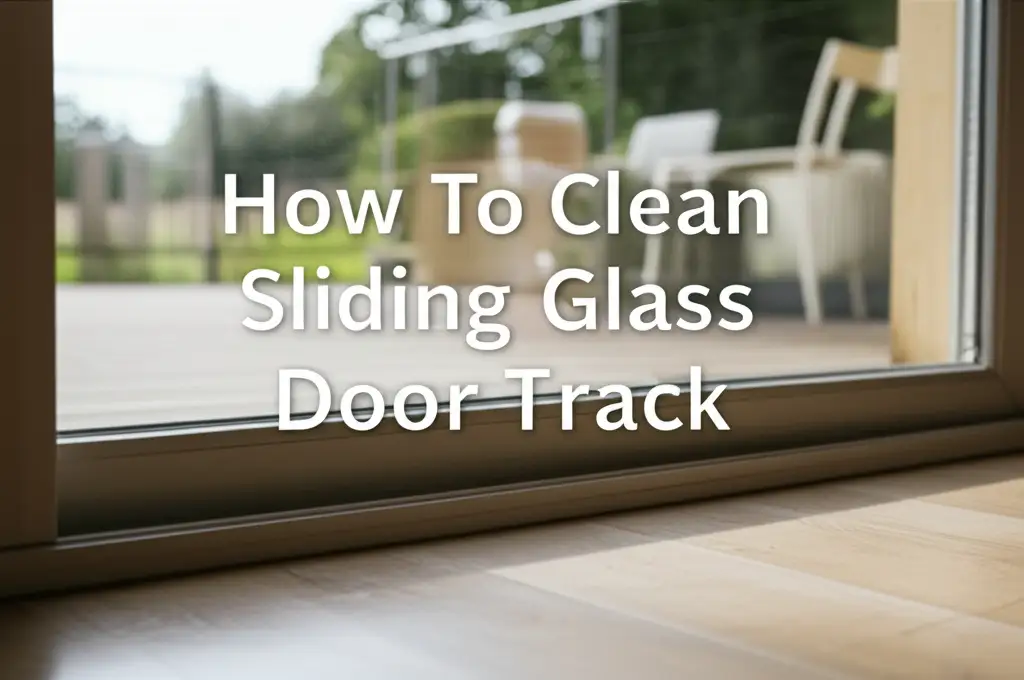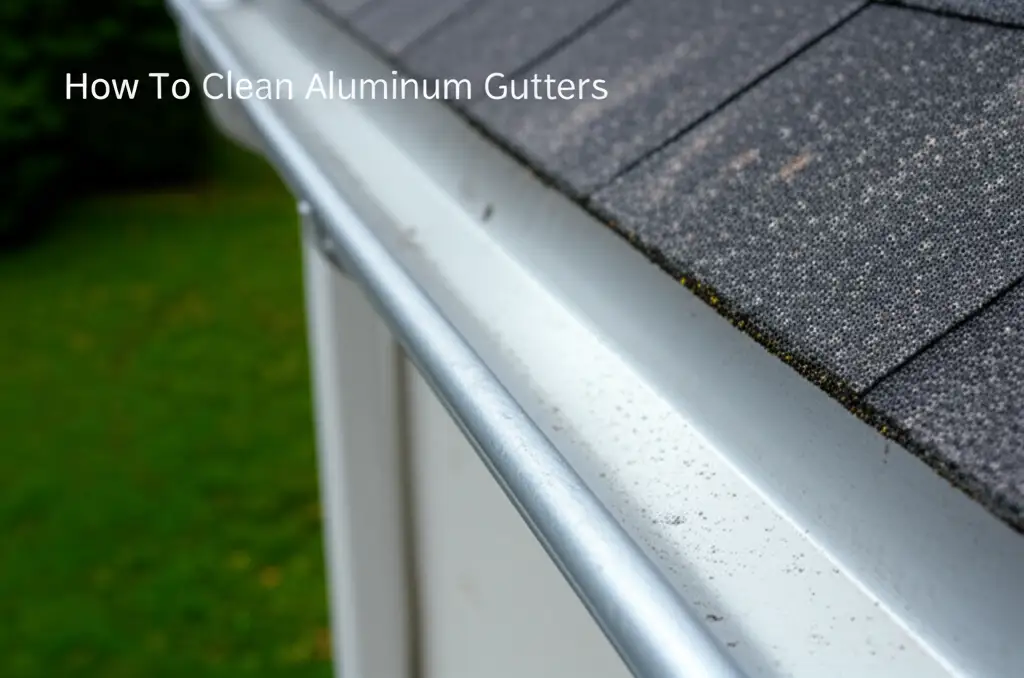· Home Maintenance · 20 min read
How To Clean Patio Door Track

How to Clean Patio Door Track for Smooth Sliding
Do you hear a frustrating grinding sound when you try to open your patio door? Does it stick, or feel heavy? A dirty patio door track is often the cause. This track collects dirt, dust, pet hair, and debris over time. This buildup stops your door from moving freely. Cleaning it makes a big difference. It improves how your door works and makes your home look better. I will show you how to clean patio door track properly. This article gives you simple steps and practical tips. We will cover everything from gathering your tools to keeping the track clean for a long time. Get ready to enjoy a smooth-gliding patio door once again.
Takeaway
Cleaning your patio door track solves sticking problems and extends door life.
- Regular removal of debris prevents buildup and ensures smooth operation.
- Use simple tools like a vacuum, brush, and soapy water for effective cleaning.
- Address stubborn grime and mold with targeted solutions.
- Lubricate the track after cleaning for optimal performance.
- Implement preventive measures to keep the track cleaner longer.
How do you clean a patio door track?
To clean a patio door track, first remove loose debris with a vacuum and stiff brush. Then, scrub the track thoroughly with warm, soapy water and a small brush or old toothbrush. Rinse the track clean with a damp cloth and dry it completely. Finally, apply a silicone-based lubricant to ensure smooth operation.
Why Cleaning Your Patio Door Track Matters
Your patio door is a gateway between your indoor and outdoor spaces. It lets in natural light and provides easy access to your yard. However, its track sees a lot of traffic and gathers much dirt. This dirt can cause big problems.
A dirty patio door track stops the door from sliding smoothly. You might feel a lot of resistance when you open or close it. This makes your daily life harder. It can even make your door less secure. A door that does not close fully is a security risk.
Beyond the hassle, neglecting to clean the track causes damage. The small wheels on your patio door can wear down faster. They roll over grit and grime, which acts like sandpaper. This can lead to costly repairs later on. Regular cleaning extends the life of your door. It keeps the components working as they should.
A clean patio door track also looks better. It shows attention to detail in your home. Nobody wants to see a track full of dirt and leaves. A clean track enhances your home’s appearance. It also makes your door work perfectly every time you use it. I know I appreciate a door that opens effortlessly. It makes coming and going much more pleasant.
Gathering Your Cleaning Tools and Supplies
Before you start cleaning your patio door track, gather all the items you will need. Having everything ready saves time and makes the job easier. You do not want to stop in the middle of cleaning to search for a tool. I always make a list first.
Essential Cleaning Tools
You likely have most of these tools already. They are common household items.
- Vacuum cleaner with a crevice tool attachment: This is your first line of defense. It removes loose dirt and debris quickly. A shop vac works very well for this task.
- Stiff-bristled brush or old toothbrush: These are perfect for scrubbing out grime from tight spaces. An old toothbrush reaches deep into the track’s grooves.
- Microfiber cloths or old rags: You will need several for wiping, rinsing, and drying. Microfiber cloths are great for picking up dirt.
- Putty knife or flat-head screwdriver (optional): Sometimes, debris gets really stuck. A flat tool can help gently scrape it out. Be careful not to scratch the track.
- Bucket: For mixing your cleaning solution.
- Gloves: Protect your hands from dirt and cleaning solutions.
Recommended Cleaning Solutions
Simple solutions work best for most patio door tracks.
- Warm water: The base for most cleaning.
- Dish soap: A few drops of standard dish soap work as a gentle cleaner. It cuts through grease and grime.
- White vinegar (optional): Vinegar is excellent for tough stains or mold. It also cleans glass well. You can mix it with water for a natural solution. For tips on using vinegar for cleaning, see our guide on how to clean glass with vinegar.
- Baking soda (optional): Combine baking soda with vinegar for a fizzing action. This helps loosen stubborn dirt or mold. It is very effective.
- Silicone-based lubricant spray: This is vital for post-cleaning. It ensures smooth operation. Do not use oil-based lubricants, as they can attract more dirt.
Having these tools and solutions ready prepares you for an efficient cleaning job. You will be surprised how quickly you can transform your patio door track with the right supplies.
Step-by-Step Guide to Deep Clean Your Patio Door Track
Now that you have your tools, it is time to deep clean your patio door track. This process is straightforward. Following these steps ensures you remove all the grime and leave the track spotless.
Initial Debris Removal
Start by getting rid of the loose stuff. This is the easiest part.
- Open your patio door: Slide the door all the way open. This exposes the entire length of the track. If you have a double-sliding door, open both sides to get to the middle.
- Vacuum the track: Use your vacuum cleaner with the crevice tool attachment. Go over the entire track several times. Pay close attention to corners and areas where dirt collects. This step removes most of the leaves, pet hair, and loose dust. It stops you from turning dry debris into muddy paste later.
- Brush out remaining loose dirt: After vacuuming, use a stiff-bristled brush or an old toothbrush. Sweep out any remaining dirt particles. You might find more stubborn debris in the grooves. Gather this dirt and vacuum it up again.
Scrubbing Away Grime
This step tackles the stuck-on dirt and grime. This is where the real cleaning happens.
- Prepare your cleaning solution: Fill a bucket with warm water. Add a few drops of dish soap. Stir it gently to create a soapy solution.
- Apply the solution: Pour a small amount of the soapy water directly into the track. Do not flood it. You want enough to loosen the dirt. You can also dip your brush directly into the solution.
- Scrub the track: Take your stiff brush or old toothbrush. Start scrubbing the track vigorously. Focus on the grooves and raised areas. Apply pressure to break down the grime. You will see dirt lifting away. For very stubborn spots, let the solution sit for a few minutes. This helps soften the gunk. I find an old toothbrush reaches into the narrowest parts of the track very well.
- Wipe away dirty water: Use a clean microfiber cloth or rag to wipe up the dirty water and loosened grime. You may need to rinse your cloth often. Repeat this step until most of the grime is gone.
Final Rinse and Dry
This final cleaning stage makes sure no residue remains.
- Rinse the track: Dampen a clean cloth with plain water. Wipe down the entire track. This removes any soap residue left behind. Soap residue can attract new dirt. Change your rinse water or rinse your cloth often to keep it clean.
- Dry the track completely: Use a dry, clean microfiber cloth to thoroughly dry the track. Moisture can attract dust or even lead to rust over time. Make sure the track is completely dry before proceeding. A dry track is less likely to attract new dirt.
- Clean the rollers: While the track is clean, take a moment to inspect the door rollers. These are the wheels on the bottom of the door. Wipe any dirt off them. A clean track combined with clean rollers gives the best sliding performance. For more detailed instructions on cleaning similar tracks, consider reviewing our guide on how to clean sliding glass door track or how to clean shower door tracks.
Following these steps will make your patio door track remarkably clean. The door will slide much more smoothly.
Tackling Stubborn Dirt and Mold in Your Patio Door Track
Sometimes, simple soap and water are not enough. Patio door tracks can collect really stubborn dirt, grime, and even mold. This happens especially in damp environments. Do not worry. We have specific methods for these tougher problems.
Addressing Mold and Mildew
Mold and mildew love damp, dark places. Your patio door track can be an ideal spot. You need to remove it not just for appearance but also for health.
- Prepare a vinegar solution: White vinegar is a natural and effective mold killer. Mix equal parts white vinegar and water in a spray bottle.
- Apply to moldy areas: Spray the vinegar solution directly onto any visible mold or mildew. Let it sit for 10-15 minutes. The acid in vinegar helps break down mold spores.
- Scrub and wipe: Use your stiff brush or old toothbrush to scrub the moldy areas. The mold should lift away more easily after the vinegar soak. Wipe everything clean with a damp cloth.
- Baking soda paste (for tough mold): If mold persists, make a paste with baking soda and a little water. Apply the paste to the mold and let it sit for 15-20 minutes. Then, scrub vigorously and wipe clean. Baking soda is abrasive and helps lift stubborn mold. You can find more information about tackling mold in our guides on how to clean mold in shower or how to clean mold with vinegar.
Always ensure good ventilation when dealing with mold. Wear gloves and consider a mask if the mold growth is extensive.
Removing Stuck-On Grime
Over time, dirt can harden and stick firmly to the track. It can feel almost like concrete.
- Soak with a stronger solution: For very stubborn spots, use a slightly more concentrated dish soap solution. You can also try a specialized non-abrasive household cleaner designed for tough grime. Apply it and let it sit for a longer period, perhaps 20-30 minutes. This gives the cleaner time to penetrate the hardened dirt.
- Scraping carefully: If the grime is still stuck, use a putty knife or the edge of a flat-head screwdriver. Hold the tool at a shallow angle. Gently scrape under the edge of the hardened grime. Be very careful not to scratch the track material. Plastic tracks scratch easily. Metal tracks are more durable, but still use caution.
- Repeat scrubbing: After scraping, re-scrub the area with your brush and cleaning solution. The loosened particles should now come off more easily.
- Rinse thoroughly: Always rinse the track thoroughly after using stronger cleaners. You want no residue left behind. Residue can attract new dirt.
Tackling stubborn grime and mold takes patience. But the result is a much cleaner track and a smoother-operating door. This extra effort is worth it for the long-term health of your patio door.
Lubricating Your Patio Door Track for Smooth Operation
Cleaning your patio door track is only half the battle. Once it is spotless, you need to lubricate it. Lubrication is essential for smooth door movement. It reduces friction. This makes your door glide effortlessly. It also protects the track and rollers from wear and tear.
Why Lubricate?
Imagine a dry car engine. It would not run well, right? Your patio door track is similar. Without lubrication, the metal or plastic components grind against each other. This causes friction. Friction leads to:
- Sticking and jamming: The door becomes hard to open and close.
- Increased wear: Rollers and tracks wear out faster. This means earlier repairs or replacements.
- Noise: You hear squeaks and grinding sounds every time you use the door.
- Reduced lifespan: The door system simply does not last as long.
Lubrication solves these problems. It creates a smooth surface for the rollers to glide on. This extends the life of your door and makes it a joy to use.
Choosing the Right Lubricant
The type of lubricant matters. Do not use any oil-based products like WD-40 or grease. These products attract dirt and dust. They can create a sticky mess in your track very quickly. This defeats the purpose of cleaning.
The best choice for patio door tracks is a silicone-based lubricant spray.
- Dry film: Silicone sprays create a dry, non-greasy film. This film repels dirt and dust.
- Weather resistant: They work well in various temperatures and resist moisture.
- Safe for most materials: Silicone is safe for metal, plastic, and rubber components.
You can find silicone spray at hardware stores or home improvement centers. Look for sprays specifically designed for tracks, hinges, or garage doors. Our guide on how to clean garage door tracks also highlights the importance of proper lubrication for smooth operation.
Applying the Lubricant
Applying lubricant is simple. Follow these steps:
- Ensure the track is dry: The track must be completely dry before you apply lubricant. Any moisture can reduce the effectiveness of the spray.
- Shake the can: Shake the silicone spray can well before use. This mixes the product.
- Apply a thin, even coat: Hold the can about 6-8 inches from the track. Spray a thin, even layer along the entire length of the track. Focus on the grooves where the rollers run. Do not over-apply. A little goes a long way.
- Lubricate the rollers: While you are at it, spray a small amount directly onto the door rollers themselves. These are the wheels on the bottom of the door. This ensures all moving parts are lubricated.
- Test the door: Gently slide the patio door back and forth several times. This helps distribute the lubricant evenly. You should notice an immediate difference. The door will glide much more easily and quietly.
- Wipe off excess: If there is any excess spray on the track or surrounding areas, wipe it off with a clean cloth. This prevents it from attracting dust.
Lubricating your patio door track after cleaning is a small step. But it provides huge benefits in terms of ease of use and door longevity. Make it a regular part of your patio door maintenance.
Preventive Measures for a Cleaner Patio Door Track
Cleaning your patio door track takes effort. So, you want to keep it clean for as long as possible. Good preventive measures reduce the frequency of deep cleaning. They also ensure your door stays smooth all year round. I try to incorporate these into my routine.
Regular Quick Cleans
The best way to prevent major buildup is consistent, small efforts.
- Daily or weekly sweep: Get into the habit of quickly sweeping or vacuuming your patio door track. A handheld vacuum or a dustpan and brush work wonders. Do this every few days or at least once a week. This removes loose dirt, leaves, and pet hair before it gets compacted.
- Monthly wipe down: Once a month, give the track a quick wipe with a damp cloth. You can use a bit of soapy water if needed. This helps pick up fine dust and light grime before it becomes a problem. This simple action prevents dirt from hardening.
These quick cleans take only a minute or two. They make a big difference in the long run. They stop dirt from forming a solid layer.
Protecting from Elements
Your patio door track is exposed to the outdoors. Weather elements bring dirt and debris.
- Door mats: Place a sturdy doormat both inside and outside your patio door. Mats trap dirt from shoes. This means less dirt ends up in the track. Choose mats that are easy to clean.
- Regular patio cleaning: Clean your patio or deck regularly. If the area around the door is clean, less dirt will track into the door groove. Sweeping or hosing down your patio helps. If you’re looking for ways to clean your patio without a pressure washer, check out our guide on how to clean concrete patio without pressure washer.
- Weather stripping inspection: Check your door’s weather stripping around the edges. Good weather stripping forms a tighter seal. This prevents dust, rain, and insects from entering the track area. Replace worn-out stripping.
- Consider track covers: Some patio door systems offer track covers. These are removable strips that sit in the track when the door is closed. They protect the track from collecting debris. Remove them for full door operation.
By implementing these preventive measures, you will find your patio door track stays cleaner much longer. This saves you time and effort on future deep cleans. It also ensures your door always operates at its best.
Common Mistakes to Avoid When Cleaning Patio Door Tracks
Cleaning your patio door track is important. But doing it incorrectly can cause problems. Knowing what to avoid is as crucial as knowing what to do. I have made some of these mistakes myself, so I want to help you avoid them.
Using Harsh Chemicals
It might seem logical to use strong cleaners for tough dirt. However, this is a common mistake.
- Avoid abrasive cleaners: Do not use scouring powders or cleaners with harsh grit. These can scratch the track surface. Scratches create rough spots where dirt can collect more easily in the future. They also look bad.
- Steer clear of strong acids or bleaches: These chemicals can damage the track material. They might discolor plastic or corrode metal components. Always test a small, hidden area first if you are unsure about a cleaner. Gentle dish soap and water, or vinegar, are usually sufficient.
Neglecting Rollers and Other Components
The track is only one part of the system.
- Do not forget the rollers: The door rollers are crucial for smooth movement. If the track is clean but the rollers are clogged with hair and dirt, your door will still stick. Always wipe the rollers clean and lubricate them after cleaning the track.
- Inspect door alignment: Sometimes, a door sticks not just because of dirt, but because it is out of alignment. If, after cleaning and lubricating, the door still drags heavily, consult a professional. They can adjust the door’s height or balance.
Overlooking the Dry Step
Drying the track properly is a small but vital step often skipped.
- Do not leave it wet: Leaving water or cleaning solution in the track attracts more dirt. It can also promote mold growth. Excess moisture can also cause metal parts to rust over time. Always dry the track completely with a clean cloth. This ensures the lubricant adheres properly too.
Improper Lubrication
Using the wrong lubricant or applying it incorrectly can do more harm than good.
- Avoid oil-based lubricants: As mentioned earlier, oils like WD-40 attract dust and create a sticky mess. They can gunk up the track quickly. Always use a silicone-based spray.
- Do not over-lubricate: Too much lubricant is not better. It can create a gooey residue that attracts dust. A thin, even coat is all you need. Wipe away any excess immediately.
By avoiding these common mistakes, you ensure your patio door track cleaning efforts are effective. You also protect your door from unnecessary damage. Your door will thank you with smooth, silent operation.
Benefits of a Well-Maintained Patio Door Track
A clean and well-maintained patio door track offers many benefits. These go beyond just easy opening. Investing a little time in track care pays off in several ways. I have personally experienced the positive impact.
Enhanced Home Appearance and Value
First, a clean track simply looks better. It shows attention to detail in your home. A sparkling clean patio door track gives a good impression. It indicates a well-cared-for home. This can contribute to your home’s overall aesthetic appeal. If you ever plan to sell, small details like this add to the perceived value of your property. Buyers notice these things.
Improved Door Functionality and Longevity
The most obvious benefit is improved function. A clean, lubricated track allows your patio door to slide effortlessly. You will no longer struggle to open or close it. This makes daily life more convenient. More importantly, it extends the life of your door.
- Less wear and tear: Dirt and grime act like sandpaper on rollers and tracks. A clean track reduces friction and wear. This means the rollers and track components last much longer.
- Reduced repair costs: When parts wear out prematurely, you face repair or replacement costs. Regular maintenance prevents these expensive issues.
- Consistent performance: Your door will open and close smoothly every time, year after year.
Energy Efficiency and Security
A well-maintained track also plays a role in your home’s energy efficiency and security.
- Better seal: When your door slides smoothly, it closes completely. This ensures a tight seal against the elements. A good seal prevents drafts. It keeps conditioned air inside during summer and warm air inside during winter. This can lead to lower energy bills.
- Enhanced security: A door that closes and locks properly is more secure. If the track is dirty, the door might not fully engage the lock. This leaves your home vulnerable. A clean track ensures the door locks securely.
Taking care of your patio door track is a smart investment. It improves your daily comfort. It protects your home. It saves you money in the long run. It is a simple task that delivers big results.
Frequently Asked Questions (FAQ)
How often should I clean my patio door track?
You should sweep or vacuum your patio door track weekly to remove loose debris. A thorough deep clean with scrubbing and lubrication is recommended every 3-6 months. This frequency can change based on usage, pet presence, and exposure to outdoor elements.
Can I use a pressure washer to clean my patio door track?
Using a pressure washer directly on your patio door track is not recommended. The high pressure can damage the rollers, seals, or even force water into the wall structure. It can also blast dirt into hidden areas. Stick to a vacuum, brush, and gentle cleaning solutions.
What kind of lubricant is best for patio door tracks?
A silicone-based lubricant spray is best for patio door tracks. It creates a dry film that repels dirt and moisture. Avoid oil-based lubricants like WD-40, as they attract dust and can create a sticky, messy buildup in the track over time.
Why is my patio door still hard to open after cleaning the track?
If your patio door remains hard to open after a thorough cleaning and lubrication, the problem might be worn-out rollers or door alignment issues. Inspect the rollers for damage. If they are broken or stiff, they may need replacement. You might also need to adjust the door’s alignment.
Are there natural cleaning solutions for patio door tracks?
Yes, you can use natural cleaning solutions. A mixture of warm water and a few drops of dish soap is very effective. For stubborn grime or mold, white vinegar (either alone or mixed with water) works well. You can also make a paste with baking soda and water for extra scrubbing power.
How do I clean patio door rollers?
After cleaning the track, wipe down the door rollers (the wheels on the bottom of the door) with a damp cloth to remove any visible dirt or hair. You can also spray a small amount of silicone lubricant directly onto the rollers to help them glide smoothly.
Conclusion
A dirty patio door track can be a daily nuisance. It makes your door stick. It creates annoying sounds. It even shortens your door’s lifespan. But now, you know exactly how to clean patio door track efficiently. By following the simple steps I have shared, you can transform your struggling door into one that glides open with ease.
Remember to start by removing loose debris. Then, scrub away the grime with gentle cleaning solutions. Do not forget to tackle stubborn mold and dry the track completely. Finally, lubricate the track and rollers with a silicone spray for smooth operation. Regular maintenance and preventive measures will keep your patio door track cleaner for longer. This saves you time and effort down the road. Enjoy the smooth, quiet, and effortless movement of your newly cleaned patio door. It is a small change that brings significant comfort to your home. Take action today to give your patio door the care it deserves!
- patio door cleaning
- door track maintenance
- sliding door track
- clean patio door
- home upkeep
- outdoor living




